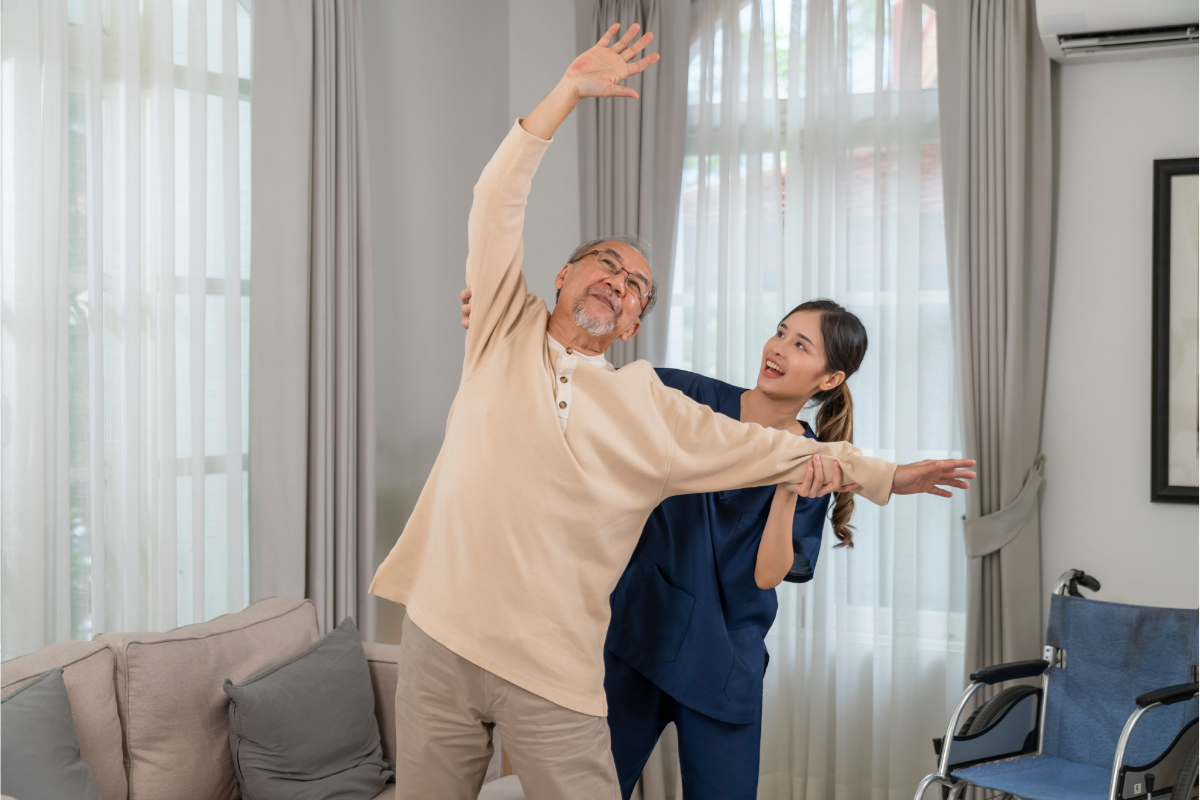Caring for elderly relatives can be a challenging task, especially when it comes to ensuring their safety at home. Falls, burns, and other accidents are common among the elderly, and it is important to take practical measures to prevent them. In this article, we will discuss step-by-step practical home safety measures that can help you care for your elderly relatives and ensure their safety.
The first step to ensuring home safety for the elderly is to assess their living environment. This includes identifying potential hazards such as loose carpets, slippery floors, and poor lighting. Once potential hazards are identified, it is important to take action to remove or minimize them. This may involve installing grab bars in the bathroom, securing loose carpets, and improving lighting in dimly lit areas.
In addition to assessing the living environment, it is important to ensure that your elderly relatives have the necessary equipment to help them move around safely. This may include mobility aids such as canes or walkers, as well as assistive devices such as shower chairs and raised toilet seats. By taking practical steps to improve home safety, you can help your elderly relatives maintain their independence and enjoy a higher quality of life.
Assessing Home Safety Needs
When caring for elderly relatives, it is important to assess their home safety needs to ensure a safe and secure living environment. This involves identifying potential hazards and evaluating their mobility and health status.
Identifying Potential Hazards
The first step in assessing home safety needs is to identify potential hazards. This includes looking for tripping hazards such as loose rugs or cluttered pathways. Electrical hazards such as frayed cords or overloaded outlets should also be addressed. Additionally, it is important to ensure that smoke detectors and carbon monoxide detectors are installed and functioning properly.
Bathrooms and kitchens can be particularly hazardous areas. Non-slip mats should be placed in the shower or bathtub and grab bars should be installed to assist with mobility. In the kitchen, sharp objects and hot surfaces should be kept out of reach and fire extinguishers should be easily accessible.
Evaluating Mobility and Health Status
It is also important to evaluate the mobility and health status of elderly relatives to determine their specific home safety needs. For example, if they use a wheelchair or walker, doorways and hallways should be widened to accommodate them. If they have trouble with balance, handrails should be installed on staircases.
In addition to physical mobility, it is important to consider their cognitive abilities. For those with dementia or Alzheimer’s, it may be necessary to install locks on certain doors or cabinets to prevent wandering or accessing dangerous items.
Overall, assessing home safety needs is an important step in caring for elderly relatives. By identifying potential hazards and evaluating their mobility and health status, you can create a safe and secure living environment for your loved ones.
Implementing Safety Measures
Securing the Environment
One of the most important steps in caring for elderly relatives is to secure the environment in which they live. This can be done by removing any tripping hazards, installing grab bars and handrails, and ensuring that all areas of the home are well-lit. It is also important to secure any loose rugs or carpets to prevent them from slipping and causing falls.
Another important measure is to install smoke detectors and carbon monoxide detectors throughout the home. These devices should be tested regularly to ensure that they are functioning properly.
Emergency Preparedness
In addition to securing the environment, it is also important to be prepared for emergencies. This includes having a first aid kit on hand, as well as a list of emergency contacts. It is also a good idea to have a plan in place for what to do in the event of a power outage or severe weather.
If the elderly relative has any medical conditions or requires medication, it is important to have a supply of medication on hand in case of an emergency. It is also a good idea to have a copy of their medical records and any relevant contact information for their doctors.
By taking these practical steps to secure the environment and prepare for emergencies, caregivers can help ensure the safety and well-being of their elderly relatives.
Adapting Daily Routines
When caring for elderly relatives, it is important to make necessary adjustments to their daily routines to ensure their safety. This section will discuss two areas where adjustments may be necessary: personal care and medication management.
Personal Care Adjustments
As individuals age, their mobility and physical abilities may decline, making personal care tasks more difficult. It is important to assess the needs of the elderly relative and make appropriate adjustments to their daily routine. Some practical home safety measures that can be taken include installing grab bars in the bathroom, using non-slip mats in the shower, and providing a shower chair for those who have difficulty standing for extended periods.
Additionally, caregivers may need to assist with personal care tasks such as bathing, dressing, and grooming. It is important to approach these tasks with sensitivity and respect for the individual’s dignity. Caregivers should communicate clearly and involve the elderly relative in decision-making as much as possible.
Medication Management
Managing medication can be a complex and challenging task, especially for elderly individuals who may be taking multiple medications. Caregivers should ensure that medication is stored safely and properly labeled. It may be helpful to use a pill organizer or set reminders to ensure that medication is taken at the appropriate times.
Caregivers should also be aware of potential side effects and interactions between medications. It is important to communicate with healthcare providers and pharmacists to ensure that medications are being taken correctly and safely.
By making necessary adjustments to daily routines, caregivers can help ensure the safety and well-being of their elderly relatives.
Utilizing Support Resources
When caring for elderly relatives, it can be overwhelming to manage their safety and well-being on your own. Utilizing support resources can provide additional assistance and peace of mind.
Professional Caregiver Options
One option for support is to hire a professional caregiver. There are different types of caregivers available, including certified nursing assistants (CNAs), home health aides (HHAs), and licensed practical nurses (LPNs). These caregivers can assist with daily living activities such as bathing, dressing, and medication management.
It’s important to do research and find a reputable agency or individual caregiver with appropriate credentials and experience. It’s also important to communicate clearly with the caregiver about your elderly relative’s needs and preferences.
Technology Aids for Safety
Another option for support is to utilize technology aids for safety. There are various devices and systems available that can help monitor and alert you to potential safety concerns. For example, a medical alert system can provide quick access to emergency services in case of a fall or other medical emergency.
Other technology aids include home monitoring systems that can detect smoke, carbon monoxide, or water leaks. Smart home devices can also be programmed to turn off appliances or lights remotely, reducing the risk of fire hazards or falls.
Overall, utilizing support resources can help ease the burden of caring for elderly relatives and provide additional safety measures. It’s important to weigh the pros and cons of different options and find the best fit for your family’s needs.

Carlos Maia is the dedicated writer behind the invaluable content at Digital Nearby, a blog that provides essential tips for caregivers of the elderly. With a remarkable talent for weaving words into compelling narratives, Carlos brings a unique perspective and genuine passion to every piece he creates. His extensive experience spans various fields, from healthcare to personal development, allowing him to masterfully blend knowledge and empathy in his writing. Carlos not only excels at crafting informative and engaging articles but also understands the nuanced needs and interests of his audience. His dedication ensures that each piece of content is not only relevant but also deeply impactful, offering caregivers practical advice and heartfelt support. Whether through insightful guides, touching stories, or persuasive content, Carlos has the gift of leaving a lasting impression on his readers, making their caregiving journey a little easier and a lot more fulfilling.

